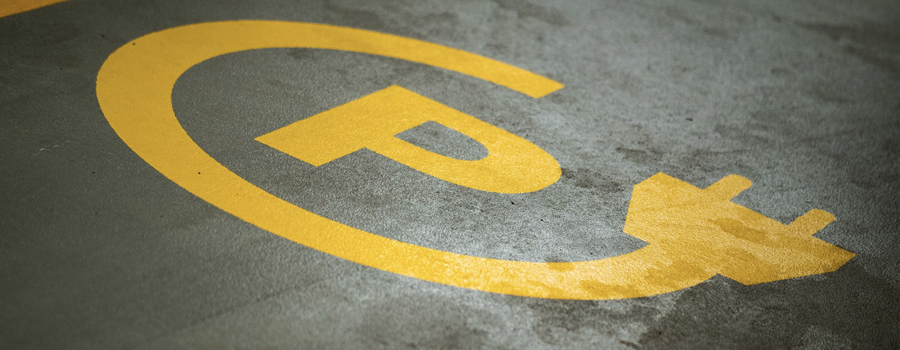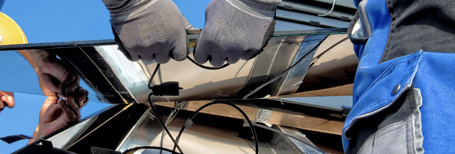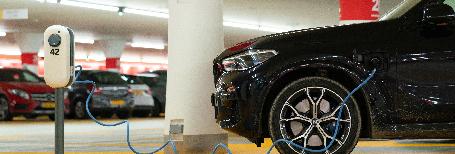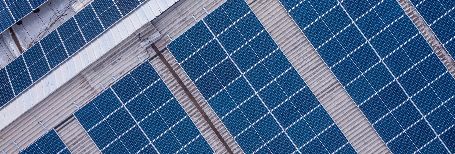
The new energy vehicle industry is a strategic emerging industry. The development of new energy vehicles is an effective measure to promote energy conservation and emission reduction. Pure electric vehicles can achieve zero pollution in the operation process. The development of the automobile industry not only brings opportunities and vitality to the social economy, but also brings convenience to people's daily travel. Cars are changing our lives, but also viciously changing our environment, Energy conservation and environmental protection of automobiles are urgent problems to be solved at present.
With the enhancement of people's awareness of environmental protection, pure electric vehicles are increasingly replacing petroleum energy vehicles in major cities as a new generation of transportation tools. But for new energy vehicles, the biggest obstacle is infrastructure construction, price and site constraints. Compared with hybrid electric vehicles, electric vehicles need more supporting infrastructure, such as charging facilities in residential areas, highway service areas or large public places.
With the large-scale construction and application of charging stations, the interconnection of vehicle piles, electric energy metering and safety problems are increasingly apparent. Electric vehicle charging station (pile) products are still in the early stage of development, and most of the products in the industry are in the transition period of new and old standards. The electric vehicle charging station (pile) has potential safety hazards in terms of charging safety, electrical performance indicators, pile compatibility, interoperability of charging stations (piles), etc. It is urgent to carry out relevant inspection and quality evaluation.
NOA can provide you with professional laboratory tests, including NB/T 33001-2010 Specification for electric vehicle off-board conductive charger, NB/T 33002-2010 Specification for electric vehicle A.C charging point, NB/T 33008.1-2018 Specification for inspection and test of electric vehicle charging equipment Part 1: off board charger, NB/T 33008.2-2018 Specification for inspection and test of electric vehicle charging equipment Part 2: AC charging pile IEC 61851-1:2010 Electric vehicle conductive charging system – Part 1: General requirements, QGDW 1591-2014 Electric vehicle off-board charger testing technical specification, QGDW 1592-2014 Electric vehicle AC charging spot testing technical specification and other standard laboratory testing schemes.

One. Overall Station
1. Power supply system inspection
2. Charging system inspection
3. Monitoring system inspection
4. Inspection of civil engineering and fire protection measures
5. Document review
Two. Off-board charger
1. General inspection items
2. Charge control function test
3. Standby power consumption test
4. Vehicle plug locking function test
5. Display function test
6. Output voltage exceeding vehicle allowable value test
7. Output voltage control error test
8. Insulation fault test
9. Input function test
10. Emergency stop function test
11. Open door protection test
12. Communication protocol conformance test
13. Interoperability test
14. Measurement verification test
Three. AC charging pile
1. General check items
2. Charging readiness test
3. Start-up and charging phase test
4. CP disconnection test
5. CP grounding test
6. Loss of continuity test for protective earth conductor
7. Output overcurrent test
8. Disconnect switch S2 test
9. CP circuit voltage limit test
10. Interoperability test in full
11. Metrological verification test
Four. Reference Standard
1. NB/T 33004-2013 Specification for Electric Vehicle Charging and Switching Facilities Engineering Construction and Completion Acceptance
2. GB 50966-2014 Design Code for Electric Vehicle Charging Station
3. GB50149-2010 Specification for Construction and Acceptance of Busbar Installation of Electrical Installation Engineering
4. GB/T 27930-2015 Communication protocol between non-vehicle-carrying conductive charger and battery management system for electric vehicles
5. GB/T 28569-2012 Electric vehicle AC charging pile power metering
6. GB/T 29316-2012 Technical requirements for power quality of electric vehicle charging and switching facilities
7. GB/T 29318-2012 Electric vehicle non-vehicle charger power metering
8. GB/T 34657.1-2017 Electric vehicle conductive charging interoperability test specification Part 1 Power supply equipment
9. GB/T 34657.2-2017 Electric vehicle conductive charging interoperability test specification Part 2 Vehicle
10. GBT 34658-2017 Conformance test of communication protocol between non-vehicle conductive charger and battery management system for electric vehicles
11. JJG 1148-2018 Specification for metrological verification of AC charging pile for electric vehicles
12. JJG 1149-2018 Specification for metrological verification of non-vehicle-mounted chargers for electric vehicles
One, Test categories and items
| Serial number | Test categories | Test items | |
| 1 | General inspection | Appearance inspection | Mechanical switch inspection |
| Mark inspection | Lightning protection measures inspection | ||
| Basic composition check | Anti-theft inspection | ||
| 2 | Functional test | Charge control function test | Pre-charge function test |
| Communication function test | Display function test | ||
| Insulation detection function test | Input function test | ||
| Dc output circuit short-circuit detection function test | Measurement function test | ||
| Function test of vehicle plug locking | Emergency stop function test | ||
| 3 | Safety requirement test | Input overvoltage protection test | Emergency stop device starting test |
| Input undervoltage protection test | Overshoot test of input current | ||
| Output overvoltage protection test | Reverse connection test of battery | ||
| Output short-circuit protection test | Anti-countercurrent function test | ||
| Overtemperature protection test | Contactor adhesion test | ||
| Door protection test | |||
| 4 | / | Charging mode and connection mode inspection | |
| 5 | / | Charging connection device inspection | |
| 6 | / | Electrical isolation inspection | |
| 7 | Electric shock protection test | Direct contact protection test | Power supply input loss test |
| 8 | / | lectrical clearance and creepage distance test | |
| 9 | Insulation performance test | Insulation resistance test | Dielectric test |
| Impulse voltage withstand test | |||
| 10 | / | Ground resistance test | |
| 11 | Charge output test | Maximum constant power output test | Current limiting characteristic test |
| Power control test | Response time test of output current | ||
| Low voltage auxiliary power supply test | Stop rate test of output current | ||
| Accuracy test for stable current | Overshoot test of start output | ||
| Accuracy test for stable voltage | Measurement error test of output current | ||
| Voltage ripple factor test | Measurement error test of output voltage | ||
| Current ripple test | Update time test of measurements | ||
| Output current setting error test | Efficiency test | ||
| Output voltage setting error test | Power factor test | ||
| Voltage limiting characteristic test | |||
| 12 | / | Standby power consumption test | |
| 13 | / | Protocol conformance test | |
| 14 | Control-guided test | Charge control state test | Mismatch test of Battery voltage and communication message test |
| Charging connection control timing test | Battery voltage over charger range test | ||
| Control guide voltage limit test | Battery double protection function test | ||
| Communication interrupt test | Mismatch test of vehicle maximum allowable total charging voltage | ||
| Protective grounding conductor continuity test | Test of charging demand greater than battery parameters | ||
| Continuous detection signal disconnection test | |||
| Output impulse current test | |||
| 15 | / | Noise testing | |
| 16 | / | Internal temperature rise test | |
| 17 | / | Allowable temperature test | |
| 18 | / | Mechanical robustness testing | |
| 19 | Protection degree test | Tests to prevent the entry of solid foreign matter | Preventing water entering test |
| 20 | / | Salt spray test | |
| 21 | / | Anti-rust (anti-oxidation) test | |
| 22 | / | Low temperature test | |
| 23 | / | High temperature test | |
| 24 | / | Cyclic damp heat test | |
| 25 | Electromagnetic compatibility experimentation | Immunity test | Launching test |
2. Reference Standards
1. NBT 33001-2018 Specification for electric vehicle off-board conductive charger
2. NBT 33002-2010 Specification for electric vehicle A.C charging point
3. 《GB/T 18487.1-2015 Electric vehicle conductive charging system—Part 1:General requirements》
4. 《GB/T 18487.2-2017 Electric vehicle conductive charging system—Part 2:EMC requirements for off-board electric vehicle supply equipment》
5. 《GB/T 20234.1-2015 Connection set for conductive charging of electric vehicles—Part 1:General requirements》
6. 《GB/T 20234.2-2015 Connection set for conductive charging of electric vehicles—Part 2:AC charging coupler》
7. 《GB/T 20234.3-2015 Connection set for conductive charging of electric vehicles—Part 3:DC charging coupler》
8. 《GB/T 27930-2015 Communication protocols between off-board conductive charger and battery management system for electric vehicle》
9. 《GB/T 34658-2017 Conformance test for communication protocols between off-board conductive charger and battery management system for electric vehicle》
10. 《NBT33008.1-2018 Inspection and test specifications for electric vehicle charging equipment Part 1: off-board charger》
11. 《NBT33008.2-2018 Inspection and test specifications for electric vehicle charging equipment Part 2: A.C. charging spot》
12. 《GBT 28569-2012 Electric energy metering for electric vehicle AC charging spot》
13. 《GBT 29318-2012 Electric energy metering for electric vehicle off-board charger》

In the following cases, the product must undergo type test:
(1) The type test shall be carried out for the newly put into production products (including the products produced in other factories) before the production appraisal; (2) When design change, process or main components change and affect product performance, type test shall be conducted before production; (3) Type test shall be carried out for products that have been out of production for more than two years before being put into production again.










Tel:+86-400 821 5138
Fax:+86-21 3327 5843
Email:noa@noagroup.com